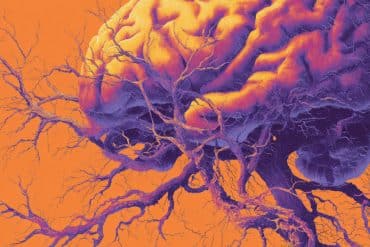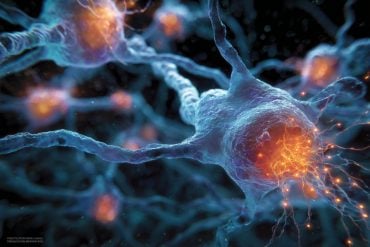Summary: New research identifies a protein, TIMP3, overproduced in age-related macular degeneration (AMD) that may drive the disease’s progression. By targeting the enzyme linked to inflammation and drusen formation, scientists reduced early signs of AMD in stem cell models, offering hope for new treatments.
Current therapies for AMD are limited, but this discovery provides insight into potential therapeutic pathways. The findings could help prevent vision loss by halting drusen accumulation, a hallmark of AMD.
Key Facts:
- TIMP3 protein overproduction is linked to early stages of AMD.
- Blocking inflammation pathways reduced drusen formation in lab models.
- New treatments could prevent AMD progression and vision loss.
Source: University of Rochester
Age-related macular degeneration (AMD) is a leading cause of irreversible vision loss in the United States. Despite existing treatments, the underlying causes of this disease and effective therapies remain elusive.
New research published in the journal Developmental Cell provides important insights into the cellular mechanisms behind AMD and offers potential avenues for new treatments.
“Current treatments for AMD have limited efficacy and often come with significant side effects,” said Ruchira Singh, PhD, with the University of Rochester Flaum Eye Institute and Center for Visual Sciences, and lead author of the study.

“Our research aims to identify novel therapeutic targets that could potentially halt the progression of this disease.”
The study utilized human stem cells to model AMD, overcoming the limitations of previous research using animal models. By examining genes associated with both AMD and rarer inherited forms of blindness called macular dystrophies, the researchers identified a key protein involved in the early stages of the disease.
The retinal pigment epithelium (RPE), a layer of cells at the back of the eye, plays a crucial role in AMD. Over time, deposits of lipids and proteins, known as drusen, accumulate in the RPE. These deposits are often an early indicator of AMD.
The researchers discovered that a protein called tissue inhibitor of metalloproteinases 3 (TIMP3) is overproduced in AMD. TIMP3 inhibits the activity of enzymes called matrix metalloproteinases (MMPs), which are essential for eye health. Impaired MMP activity leads to increase in another enzyme which promotes inflammation and the formation of drusen.
By using a small molecule inhibitor to block the activity of the enzyme associated with inflammation, the researchers were able to reduce drusen formation in their model, suggesting that targeting this pathway could be a promising strategy for preventing AMD.
“Cellular pathways involved in drusen formation are key drivers of AMD progression,” said Dr. Singh.
“If we can halt the accumulation of drusen, we may be able to prevent the disease from progressing to a stage where vision loss occurs. This research offers hope for developing new treatments that could significantly improve the lives of millions of people affected by AMD.”
Additional co-authors include Sonal Dalvi, Michael Roll, Amit Chatterjee, Lal Krishan Kumar, Akshita Bhogavalli, Nathaniel Foley, Cesar Arduino, Whitney Spencer, and with the University of Rochester, Cheyenne Reuben-Thomas, Davide Ortolan and Kapil Bharti with the National Eye Institute, Alice Pebay with the University of Melbourne, and Bela Anand-Apte with the Cleveland Clinic.
Funding: The research was supported by the National Eye Institute, ForeBatten Foundation, and Research to Prevent Blindness.
About this AMD, vision, and genetics research news
Author: Mark Michaud
Source: University of Rochester
Contact: Mark Michaud – University of Rochester
Image: The image is credited to Neuroscience News
Original Research: Open access.
“Human iPSC-based disease modeling studies identify a common mechanistic defect and potential therapies for AMD and related macular dystrophies” by Ruchira Singh et al. Developmental Cell
Abstract
Human iPSC-based disease modeling studies identify a common mechanistic defect and potential therapies for AMD and related macular dystrophies
Age-related macular degeneration (AMD) and related macular dystrophies (MDs) primarily affect the retinal pigment epithelium (RPE) in the eye.
A hallmark of AMD/MDs that drives later-stage pathologies is drusen. Drusen are sub-RPE lipid-protein-rich extracellular deposits, but how drusen forms and accumulates is not known.
We utilized human induced pluripotent stem cell (iPSC)-derived RPE from patients with AMD and three distinct MDs to demonstrate that reduced activity of RPE-secreted matrix metalloproteinase 2 (MMP2) contributes to drusen in multiple maculopathies in a genotype-agnostic manner by instigating sterile inflammation and impaired lipid homeostasis via damage-associated molecular pattern molecule (DAMP)-mediated activation of receptor for advanced glycation end-products (RAGE) and increased secretory phospholipase 2-IIA (sPLA2-IIA) levels.
Therapeutically, RPE-specific MMP2 supplementation, RAGE-antagonistic peptide, and a small molecule inhibitor of sPLA2-IIA ameliorated drusen accumulation in AMD/MD iPSC-RPE.
Ultimately, this study defines a causal role of the MMP2-DAMP-RAGE-sPLA2-IIA axis in AMD/MDs.







